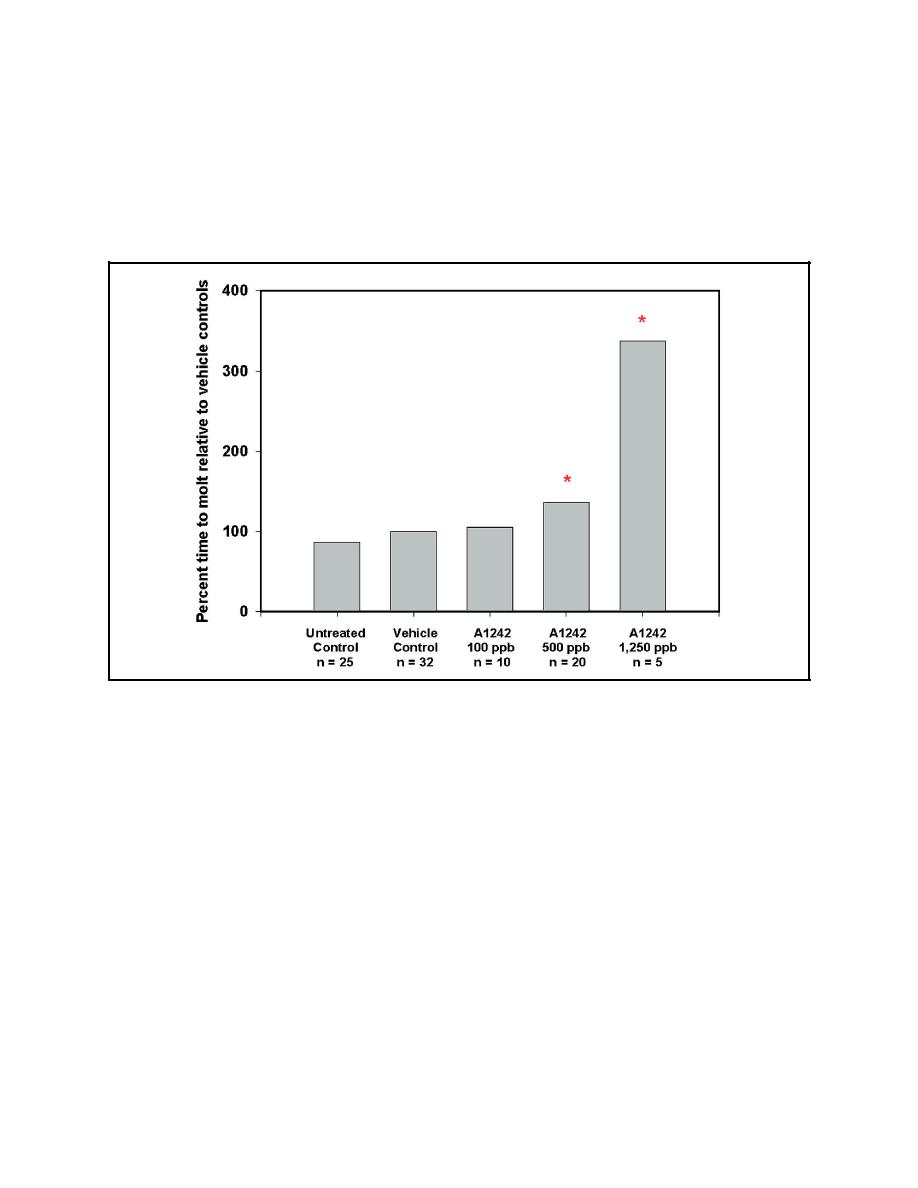 |
||
|
|
||
|
Page Title:
Figure 4. Aroclor 1242-induced molt inhibition in juvenile crawfish as median percentage of exposure duration relative to veh... |
||
| |||||||||||||||
|
|
 ERDC TN-DOER-C30
February 2003
Crawfish Molting Assay. Molting was significantly inhibited at 500 ppb and 1,250 ppb A1242
(Figure 4). Although a direct connection with the observed molting inhibition cannot be definitively
linked to EcR receptor disruption without more studies (i.e., it may be a nonreceptor-related effect
because molting involves the interactions of a number of physiological processes), the crawfish and
the cell-based assays both indicated that A1242 is capable of inhibiting molting in juvenile crawfish,
as in fiddler crabs (Fingerman and Fingerman 1977).
Figure 4. Aroclor 1242-induced molt inhibition in juvenile crawfish as median percentage of exposure
duration relative to vehicle (DMSO) controls. Asterisks indicate treatment results are
significantly different from vehicle control by one-way Analyses of Variance (ANOVA) on ranks
followed by Dunn's test, P < 0.05. Data of Jones, Ang, and Inouye (2002)
CONCLUSIONS AND FUTURE DIRECTIONS: These initial results indicate that the HepG2-
EcR assay has the potential to become a useful rapid screening test to detect contaminants that may
adversely affect arthropods. Highly sensitive cell-based assays are presently available to test
environmental samples for contaminants whose toxic effects are mediated through the Ah receptor.
Ah receptor mediation has high relevance to vertebrate organisms, including humans, but little
relevance to invertebrate organisms that lack the Ah receptor. At the present time there are no testing
methods that are sensitive to xenobiotic toxicants that specifically threaten these invertebrate
organisms. Ecological risk assessment methods are being developed for which the information
provided by such tests could prove highly useful. Ongoing work with the U.S. Geological Survey
is being conducted on environmental extracts to determine whether the HepG2-EcR cell-based assay
correlates with observed invertebrate community degradation in watersheds due to urban runoff. A
positive correlation would warrant further development of the assay.
7
|
|
Privacy Statement - Press Release - Copyright Information. - Contact Us - Support Integrated Publishing |